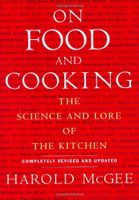Advertisement
Early Modern Times
By Harold McGee
Published 2004
The late medieval period and Renaissance brought notable progress in the art of enriched breads; both puff pastry and choux pastry date from this time. Domestic recipes for bread begin to appear in cookbooks for the emerging middle class, and already look much like modern recipes. English and American cookbooks from the 18th century on contain dozens of recipes for breads, cakes, and cookies. In England around 1800, most bread was still baked in domestic or communal village ovens. But as the Industrial Revolution spread and more of the population moved to crowded city quarters, the bakeries took over an ever increasing share of bread production, and some of them adulterated their flour with whiteners (alum) and fillers (chalk, ground animal bones). The decline of domestic baking was criticized on economic, nutritional, and even moral grounds. The English political journalist


